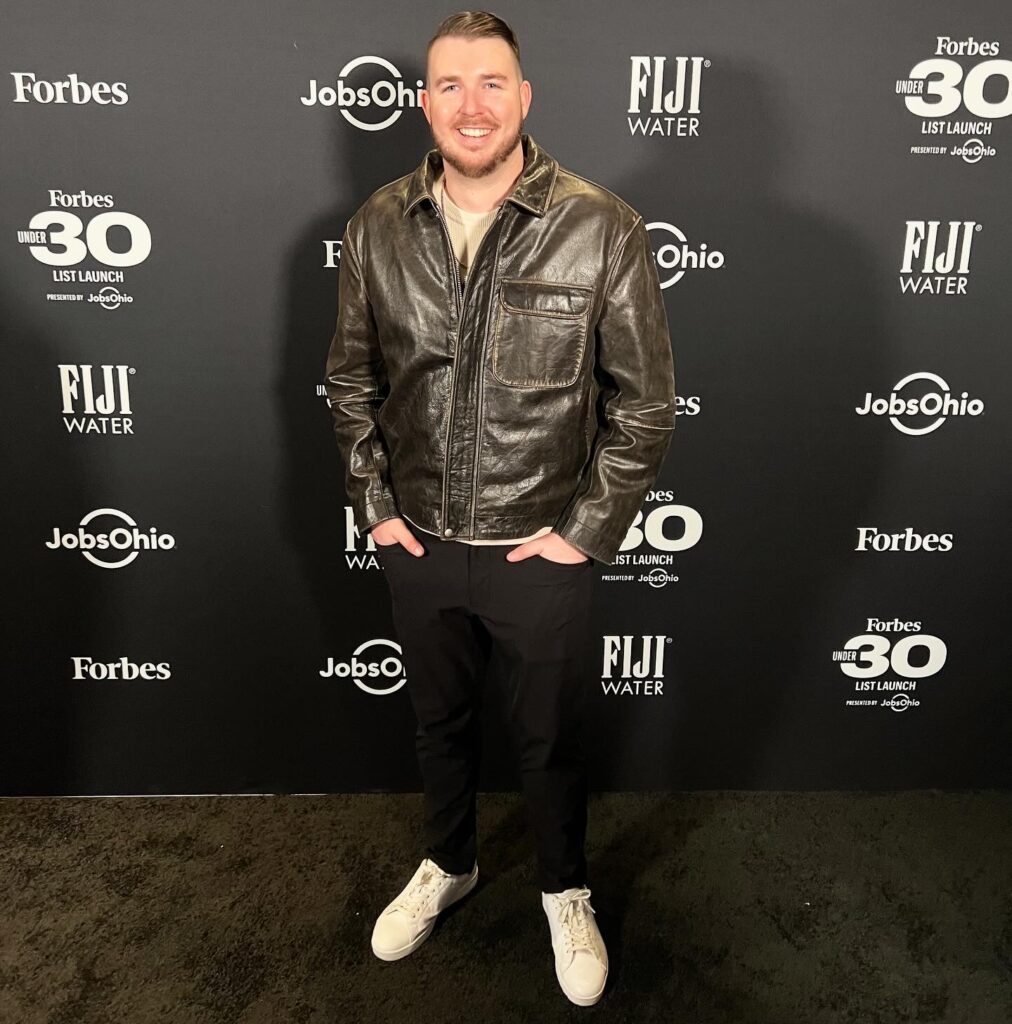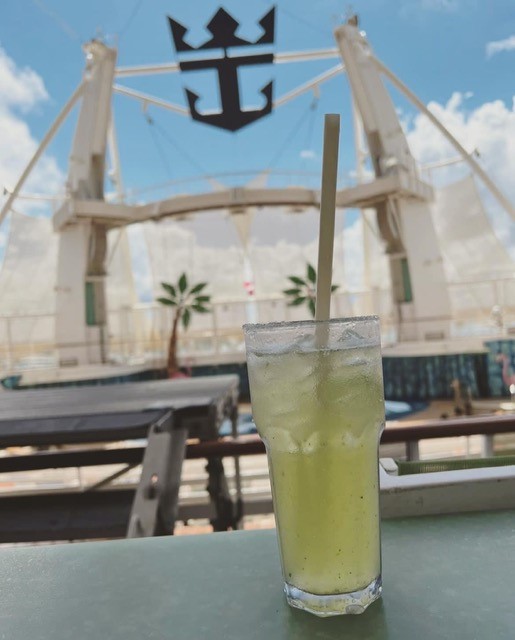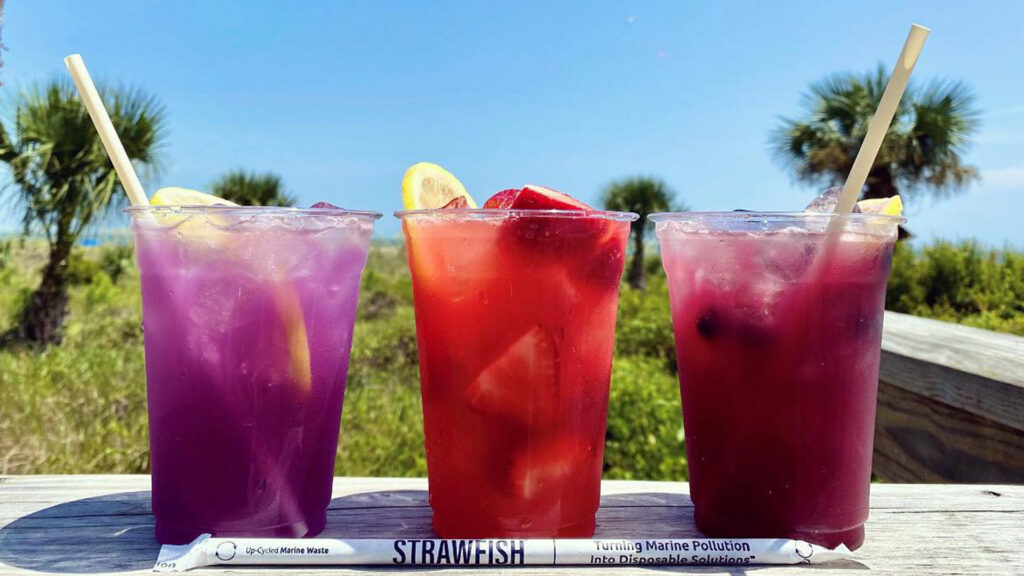By Megan Mascheri, FAU Center for Environmental Studies
The following Q&A was conducted with Kyle Lansing, co-founder of StrawFish. The Boca Raton-based company is developing biodegradable alternatives to straws and other single-use plastics. Lansing founded the company while a student at Florida Atlantic University before graduating with a degree in business administration and management in 2020. This interview has been edited for length and clarity.
Can you give an introduction about your company?

It originally started as a paper straw company. (We) made one that didn’t fall apart, sold ad space on it and gave it away for free. COVID kind of put a stop to that one, and we really dove into researching different material technologies, their true end of life cycle, how things are supposed to be disposed of and what it takes to actually get them to their true end of life cycle … and it takes a lot of effort to make it work that just isn’t being done.
When we started researching different technologies, we met up with a team down in Mexico who’s been working on material tech for about 10 years and, with the partnership with them, developed a resin that is 100% biodegradable in natural landfill conditions. All that’s got to be done with it is throw it away.
It’s cool to see this new material being produced that’s not only finding a new use for a waste product, but also getting rid of this single-use plastic problem we have.
That’s one of our biggest things, the circular economy of cleaning up a source that’s being littered. We’re currently using seashells that are on the Baja Peninsula. We clean them up and then grind them down, extract calcium carbonate from it and then compound it into our own resin.
Can you talk a little bit more about your original ideas and any trials you went through, as well as at what point you realized you could essentially go further with this idea?
Originally it was paper straws. The biggest thing was everyone hated them, and the question was, “Is it possible to make one that people don’t hate, that doesn’t fall apart, that people could potentially want to put their name on?”
You can; It’s just expensive. So that’s why they weren’t being made on the market, and giving advertisements made it free, which was great, and we had some good traction, but then COVID put just a big wrench in that and stopped everything.

So really, 2021 was our first full year with our new technology and resin and everything and the point in which we knew, “OK, hey, we can actually do this.” (That’s) when we signed Royal Caribbean. We’ve been with them since they’ve opened back up from COVID and supplied all the straws on all their ships and Celebrity ships across the world for the last couple of years now and are continuing that partnership with them.
That was our first really big publicly traded company that is well known and is all over the world (that was) entrusting us with their products. Naturally from there we just kept getting requests from our partners as we kept growing and cutlery was the next natural step. … From there the next iteration that’s coming, hopefully by the end of this year, is going to be cups. …
Really our goal is to build out an entire food service line with bags and to-go containers, portion cups and the likes to where when you go to a restaurant and are handed your to-go bag, that everything in it is biodegradable and can be just thrown away. There are no extra steps that are needed to make sure that it goes away.
So earlier you mentioned your initial business plan being impacted by COVID. Could you elaborate more on the challenges of that or any other challenges you faced with StrawFish?
COVID was obviously a big one. We’re a completely different company after COVID versus before. … We were in a good enough position to be able to sit there and research and develop what was next and think through what the next step for StrawFish was. After that it was just the challenge of getting manufacturing quality down (and) figuring out how to do that effectively (and) efficiently.
We hadn’t ever manufactured anything before this and so it was learning that process and the different steps needed to be taken and really just scaling a business to the size that we want. We’ve been pretty successful at it so far and have some good mentors around. (We’re) definitely going to keep growing and keep scaling.
Regarding scaling the business, I know your company was recently added to the Seaworthy Collective cohort this year (Seaworthy Collective is a Miami-based nonprofit organization that supports entrepreneurs in “blue tech” — technology and innovations related to marine and aquatic environments). Do you want to talk some more about your experience with that?
It’s something we applied for, understanding the community that they were involved in was something we kind of wanted to get involved in. So, we applied, started the conversations there, and (Seaworthy Collective founder and CEO Daniel Kleinman) was nice enough to let us in and just finish (the cohort) up. So that was definitely good to get plugged into the local community and in blue tech and dive into what is sitting here in our backyard.
Is there any advice that you would give to other businesses or entrepreneurs in the blue tech field working on eco-conscious products?

Figure out how to make it a business. As much as we want to do really good things in the world and we all do, I would think, it’s got to be a feasible business first. It’s being able to scale and grow.
I think we’re a pretty good example that we’ve made a real business that can sustain itself and it’s eco-friendly and doing a social good at that. Same with 4Ocean (a Boca Raton company that makes bracelets made from recycled materials) — they’ve made a good business that helps clean up trash and I think that’s kind of the key: Social entrepreneurship is key.
We can have really good ideas, but you’ve got to figure out how to keep it running beyond just little bits and pieces of grant money and figure out how you can scale it beyond localized solutions. And I think that’s the key in the space, and I think that’s where it’s heading, and people like Daniel are definitely helping with that.
Are there any companies or businesses we can look forward to seeing more StrawFish products offered in the future?
Currently we are in Royal Caribbean, like I mentioned, and Cava (restaurants) across the country. We’re in most of the major distributors, so your Syscos, etc. We’re in the Sphere in Vegas, which is a really cool one. There’s nothing like it out there. We’ve been there since they’ve opened.
I’m probably leaving some out across the country but (there are) definitely some cool conversations coming up and hopefully we’ll be branching out beyond just those.
This Q&A was conducted by Megan Mascheri, a graduate research assistant at Florida Atlantic University who is pursuing a master’s degree in its geosciences program. She has worked as a research assistant for FAU’s Center for Environmental Studies since 2021. The center manages and funds The Invading Sea.
Sign up for The Invading Sea newsletter by visiting here. If you are interested in submitting an opinion piece to The Invading Sea, email Editor Nathan Crabbe at ncrabbe@fau.edu.




Keep up the great work! I also am a FAU graduate, so go OWLS! I am a member of the Sierra Club Loxahatchee Group that consists of Palm Beach, Martin, St. Lucie and Okeechobee Counties. Are you ever available for a General Meeting of our group? We do monthly online Zoom meetings of topics concerning the environment. I think your company, your journey, and your advocacy to help our planet’s plastic crisis would be a great subject.
Thank you!